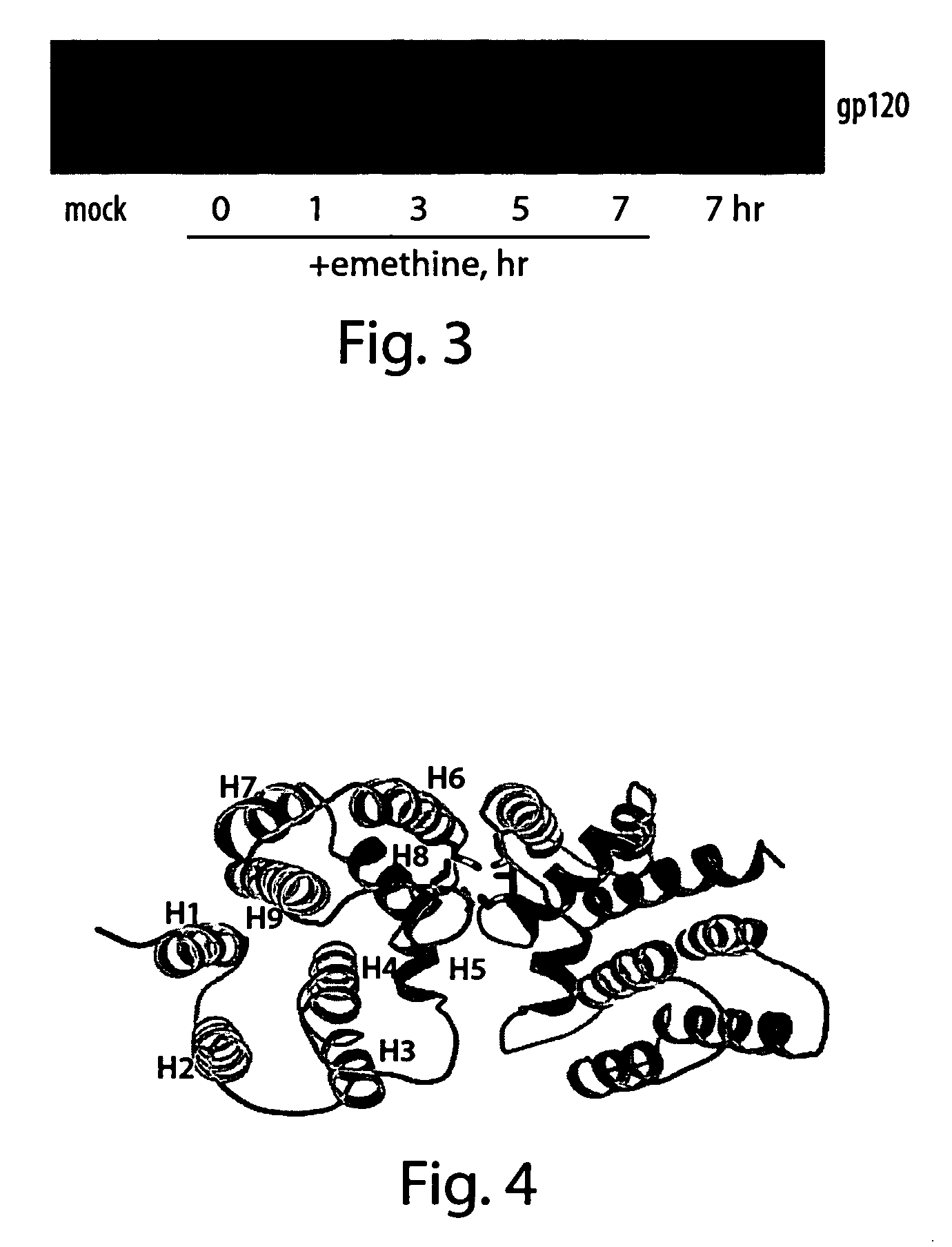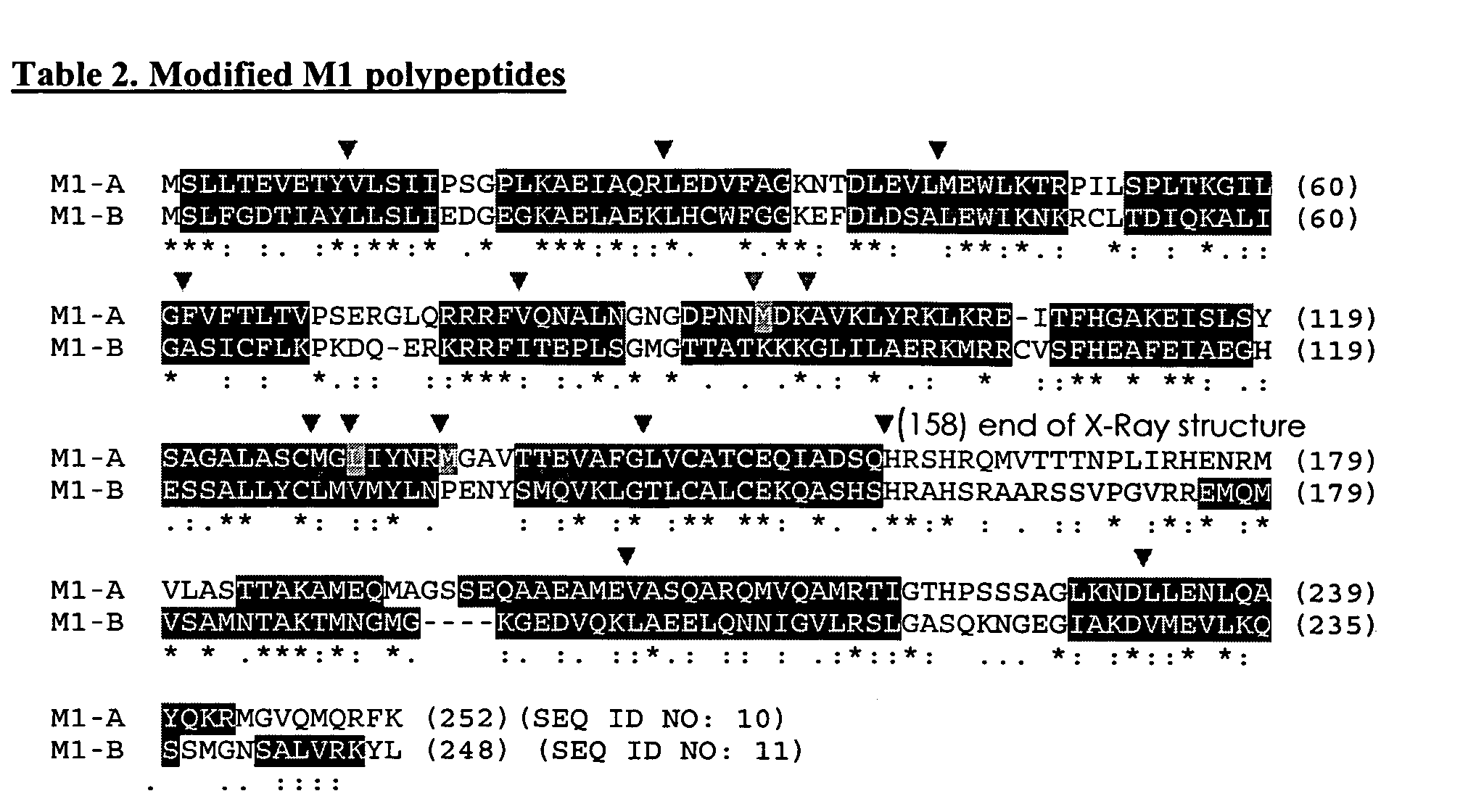Vaccine compositions and methods
a technology of compositions and vaccines, applied in the field of vaccine compositions, can solve the problems of ineffective and long-term prevention, people will develop life-threatening complications, and current flu vaccines have a disadvantage, and achieve the effect of effective and long-term t cell respons
- Summary
- Abstract
- Description
- Claims
- Application Information
AI Technical Summary
Benefits of technology
Problems solved by technology
Method used
Image
Examples
example 1
Construction of Plasmids and Vaccinia Virus Recombinants
[0108] The plasmids were constructed containing NP-genes as indicated in Table 6. These plasmids were utilized to construct recombinants of vaccinia virus (VVR) expressing “stable” and “destabilized” NP-antigens for DNA vaccination. (Table 7) The protein was destabilized using the C-end motif of ornithyn-decarboxylase (Clontech).
TABLE 6Plasmids ConstructedPro-Final plasmidBasic plasmidGene insertedmoterUsepNP (5.5 kb)pd1EGFP-N1IVA NP geneCMVDNApdNP (5.7 kb)pd1EGFP-N1(pCMV-CMVvaccinationpNP65 (8.8 kb)pSC65PR8NPORF)VV-P65InsertionpdNP65pSC65VV-P65into vaccinia(9.0 kb)viral vectors
[0109]
TABLE 7List of VVR constructedGene insertedinto tk-gene of VVRecombinants(WR strain)ExpressionDestabilizationW-NPNP+W-dNPDNP+−
example 2
Expression and Proteolytic Stability of NP-Protein Cloned in Vaccinia Virus Recombinants
[0110] CV1 cells were inoculated with W-NP or W-dNP recombinants (1 bfu / cell). 40 hours later, the cells were treated with 40 μg / ml of cycloheximide and incubated for 8 more hours. The cells were collected and homogenized, and protein content was tested by Western Blot on the level of NP-protein. The Western Blot results indicate that both recombinants were actively expressing NP-protein in its native sequence, and containing C-end motif (dNP). Fusion with C-end motif did not lead to any significant increase in proteolytic processing of dNP. Both NP and dNP were readily ubiquitinated possessing triple bands on the Western Blot, the tight globular 3-D conformation prevented the protein from proteasome processing.
example 3
Protective Immune Response of W-NP and W-dNP Recombinants
[0111] To test the protective immune response, Balb / c mice were immunized twice with corresponding VVR strains and infected with influenza A virus (IVA). Balb / c mice were infected with influenza A virus A / Aichi 2 / 68 (N3H2). The results depicted in Table 8 indicate that NP-protein delivered via VVR vector is an effective protector against influenza virus A infection. Importantly, the strain used for infection was a remote viral strain to the one NP-protein was cloned from. It indicates that T-antigenic vaccination by NP-protein protects against wide-range of influenza A strains.
TABLE 8Immunogenicity of VVR W-NP and W-dNP against influenzavirus (A / Aichi2 / 68) infection in miceDilution of infectingImmunizingIVA (A / Aichi2 / 68 strain)virus10010−110−210−3lgLD50W-NP13 / 181 / 190 / 171.3W-dNP10 / 170 / 170 / 161.1WR 8 / 114 / 6 1 / 6 2.0None10 / 11 9 / 114 / 110 / 121.7
PUM
| Property | Measurement | Unit |
|---|---|---|
| volume | aaaaa | aaaaa |
| hydrophobic | aaaaa | aaaaa |
| hydrophilic | aaaaa | aaaaa |
Abstract
Description
Claims
Application Information
 Login to View More
Login to View More - R&D
- Intellectual Property
- Life Sciences
- Materials
- Tech Scout
- Unparalleled Data Quality
- Higher Quality Content
- 60% Fewer Hallucinations
Browse by: Latest US Patents, China's latest patents, Technical Efficacy Thesaurus, Application Domain, Technology Topic, Popular Technical Reports.
© 2025 PatSnap. All rights reserved.Legal|Privacy policy|Modern Slavery Act Transparency Statement|Sitemap|About US| Contact US: help@patsnap.com



